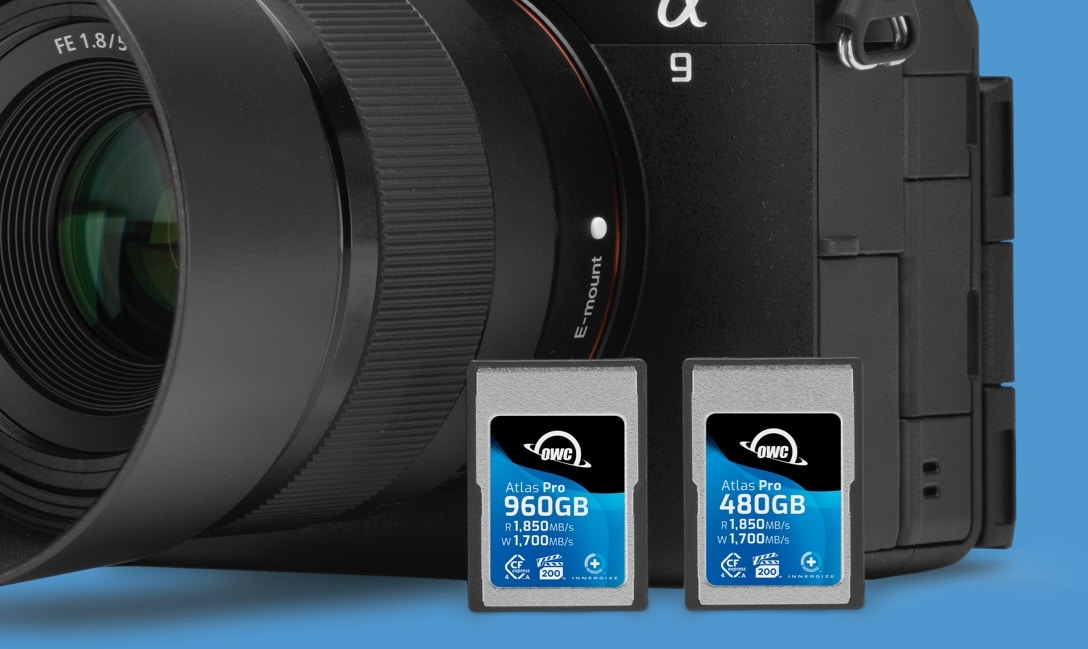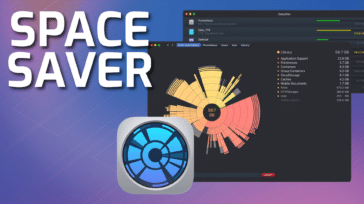
As filmmakers’ and videographers’ need for high-speed, high-capacity camera storage continues to grow, CFexpress Type A and Type B memory cards have emerged as the preferred storage format because of their superior performance, compact size, and rock-solid reliability.
To ensure creative professionals can depend on consistent CFexpress memory card performance, the CompactFlash Association (CFA) established the Video Performance Guarantee (VPG). This guarantee ensures the media can sustain specific speeds under all conditions so there is no recording mode interruption.
This article was prepared to assist users of CFexpress cards in choosing the right VPG-rated card for their workflow. A PDF of this article is available for free download by clicking here.
Performance Guaranteed
The VPG standard – indicated by a VPG200 or VPG400 logo on the memory card label – guarantees a CFexpress memory card will deliver a minimum sustained write speed in megabytes per second (MB/s) and an additional buffer dedicated to random write speeds for reliable uninterrupted video recording. This performance guarantee is especially crucial when recording 4K footage, high-frame-rate sequences, or cinematic content in 8K.

To ensure proper camera communication and settings, CFexpress card manufacturers set a VPG flag in their memory cards’ firmware that informs the camera the card is VPG certified and supports the minimum write speeds of 200MB/s (VPG200) or 400MB/s (VPG400).
This standard also helps camera manufacturers guarantee camera functionality and accurately recommend which camera settings users should activate with VPG-enabled CFexpress cards. In some cases, these warnings within the cameras are mere suggestions that if and when a pop-up message appears, it can be ignored, and in others, they are required to use specific camera settings and cannot be bypassed by any method.
How the Certification Process Works
The VPG certification process is a self-run process CFexpress card manufacturers must follow to ensure camera users will experience a consistent and dependable performance standard.
To obtain VPG certification, a card manufacturer must:
- Purchase the approved tester and the tamper-proof test script to run on their own cards
- Generate a tamper-proof pass/fail report along with a log of all tests conducted.
- Submit the report to a 3rd party CFA approved lab to verify and confirm the authenticity of the report and the log files.
Once approved by the 3rd party lab, the CFA authorizes the CFexpress card manufacturer to start selling their product with the CFA required appropriate VPG logo. Confirm your CFexpress card is truly VPG certified by visiting https://compactflash.org/video-performance-guarantee-vpg.
VPG200 vs. VPG400
VPG200
Perfect for 4K video recording and lower-bitrate workflows. It ensures a minimum sustained write speed of 200MB/s to meet the need for many professional applications.
VPG400
Designed for higher bitrate recording formats like 6K and 8K, where faster and more consistent data throughput is essential. VPG400 guarantees a minimum sustained write speed of 400MB/s and is 100% backward compatible in cameras that require VPG200 CFexpress cards.
To maximize user satisfaction and confidence in card selection, most camera manufacturers suggest or require VPG speed certified cards used in their cameras. You can also determine the sustained data rates needed for sequential write as the manual for your camera will often specify the data rate required.
Compatibility and Application
Understanding the requirements of your camera system is vital when selecting among VPG200 and VPG400 cards. For example, to utilize certain slow-motion settings such as 120fps or 240fps, Sony’s Alpha and FX series cameras require CFexpress Type A memory cards that are VPG200 certified. That’s why OWC Atlas Pro CFexpress Type A series cards were purposefully designed and tested so you can utilize all your camera’s capabilities with full VPG200 assured confidence.
VPG400 speeds ensure cameras like the Sony Burano can sustain high-speed continuous recording without performance degradation, critical for capturing high-fidelity cinematic content. OWC Atlas Pro CFexpress 4.0 Type B and OWC Atlas Ultra CFexpress 4.0 Type B memory cards provide 800MB/s and 1500MB/s minimum sustained write speeds, which far exceed the minimum sustained write speeds guaranteed by VPG certification.
With up to 4x faster minimum speed vs VPG requirements, high storage capacities, and a lower cost per GB while retaining the full capabilities of the camera, OWC Atlas CFexpress Type B cards are a cost-effective / no compromise choice.
VPG200 & VPG400
CAMERA REQUIREMENT CHART
| VPG STANDARD | CAMERA TYPES | CARD TYPES | SHOOTING MODES |
| VPG200 REQUIRED | Sony Alpha/Sony FX Series | CFexpress Type A | • 4K video recording up to 120/240fps • Works with VPG and non-VPG rated cards • 120fps and 240fps modes available only with VPG200 or faster cards |
| VPG400 RECOMMENDED | Sony Burano, Canon R1, and Canon R5 II cameras | CFexpress Type B | • Supports 4K and 6K recording at high bitrates • Recommends VPG400-rated or faster cards for its high-resolution video modes to maintain optimal performance and data integrity during extended recording sessions |

Works with Non-VPG400 Cards
SONY BURANO, CANON R1, AND CANON
While the Burano’s operation manual recommends using VPG200 or VPG400 certified CFexpress memory cards, these cameras do not prevent users from selecting advanced capabilities if a non-VPG certified card is inserted. When a non-VPG card is inserted, the Sony Burano issues a warning that it cannot guarantee the media because it is not VPG certified. This warning can be ignored and bypassed, so an OWC Atlas Ultra non VPG certified card will work. For the Canon cameras that recommend a VPG400 card, the R1 and R5mkII, there is no in camera warning message or pop up notification, and users can record in all modes with an OWC Atlas Ultra non VPG certified card.

Summing It All Up

VPG200 and VPG400 standards provide critical assurances of CFexpress card sustained write performance for professional video recording workflows. Validated through a standard and tamper proof tester approved by CFA, the certification process ensures that cards meet strict performance criteria.
You can select the appropriate CFexpress cards based on your specific video recording needs by understanding the differences between VPG200 and VPG400 — ensuring reliable data throughput and preserving the integrity of captured footage.
In some cases, the VPG needs of a camera become merely a suggestion rather than a requirement. If your CFexpress cards provide more than ample sustained write speeds for the camera’s specific needs, your capture will be reliable.
OWC Atlas Pro CFexpress 4.0 Type B and OWC Atlas Ultra CFexpress 4.0 Type B memory cards were specifically designed to greatly exceed the VPG400 minimum sustained write speeds so they would not require certification. This performance assurance enables you to easily handle the most demanding video capture uses over the card’s full storage capacity (vs other cards offering less capacity to achieve minimum VPG sustained write speeds) and enjoy the best value in CFexpress memory cards.
Understanding the differences between VPG200 & VPG400 ensures reliable processing & integrity of captured footage.
A PDF of this article is available for free download by clicking here.









